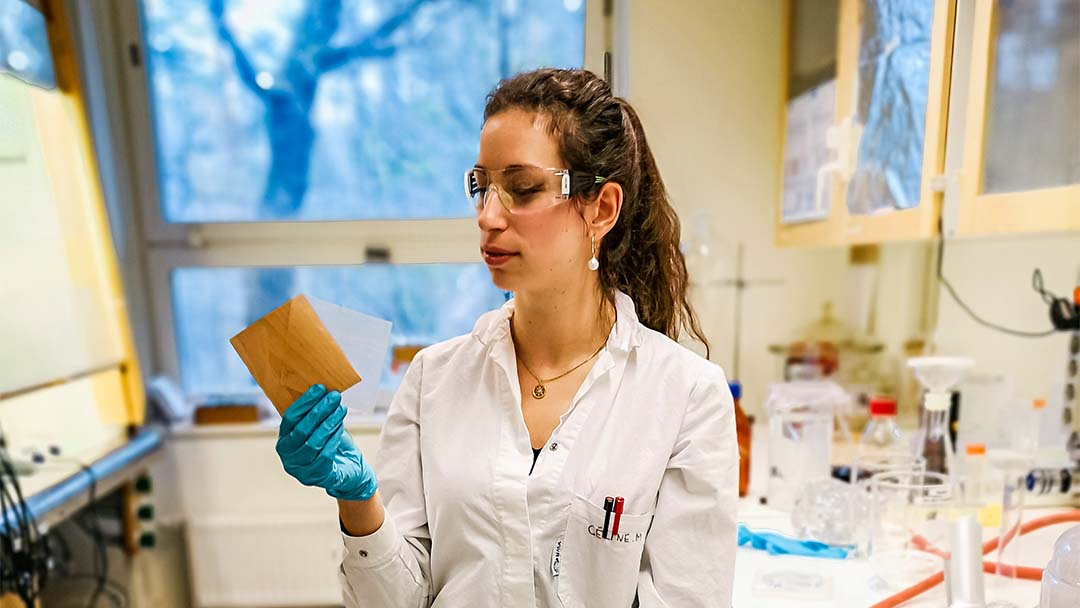Céline Montanari, Biocomposites
Transparent Wood Biocomposites for Sustainable Development

In recent years, the development of transparent wood biocomposites derived from delignified wood substrates have gained interest because they combine attractive structural properties with optical functionality.
“In my thesis, eco-friendly material components and green chemical processes have been developed for the fabrication of a fully bio-based transparent wood with tailored nanostructure” says Céline Montanari.
“We also demonstrate the possibility to functionalize wood at the nanoscale for the design of transparent wood biocomposites for heat storage, tunable optical transparency, and mechanical performance.”
Transparent wood is prepared by first removing the light-absorbing lignin and then filling the porous wood structure with a polymer that has a matching refractive index.
“In the early stages of the material development, fossil-based polymers were used for the preparation of transparent wood. Since then, a major challenge has been to replace these fossil-based polymers with bio-based ones in order to make transparent wood more sustainable.”
Why is this research important?
“One of the major challenges of the 21st century is to establish circular materials solutions based on renewable materials of low carbon footprint. My research is based on the efficient use of bio-based components and green processing concepts for the fabrication of environmentally friendly and energy-efficient transparent wood, thereby contributing to sustainable development.”
What applications could this lead to?
“Transparent wood is an eco-friendly alternative for use in engineering applications, such as transparent panels. It can be functionalized for various energy-saving purposes, such as heat-storage, thermal insulation, and controlled use of natural light.”
“It is also an aesthetic material with many possible applications in interior design. Various wood species can be used (birch, ash, beech, pine, etc.) to tune the appearance and final properties of the material as well.”
How did you become interested in this subject?
“I have been fascinated by biocomposites and their design since my master studies. Therefore, during my PhD I wanted to contribute to the development of wood-based materials and I am happy that I could do so with my research on transparent wood biocomposites.”
Text: Sabina Fabrizi
Read more at:
"Transparent Wood Biocomposites for Sustainable Development", diva2:1626002
Citrus derivative makes transparent wood 100 percent renewable
